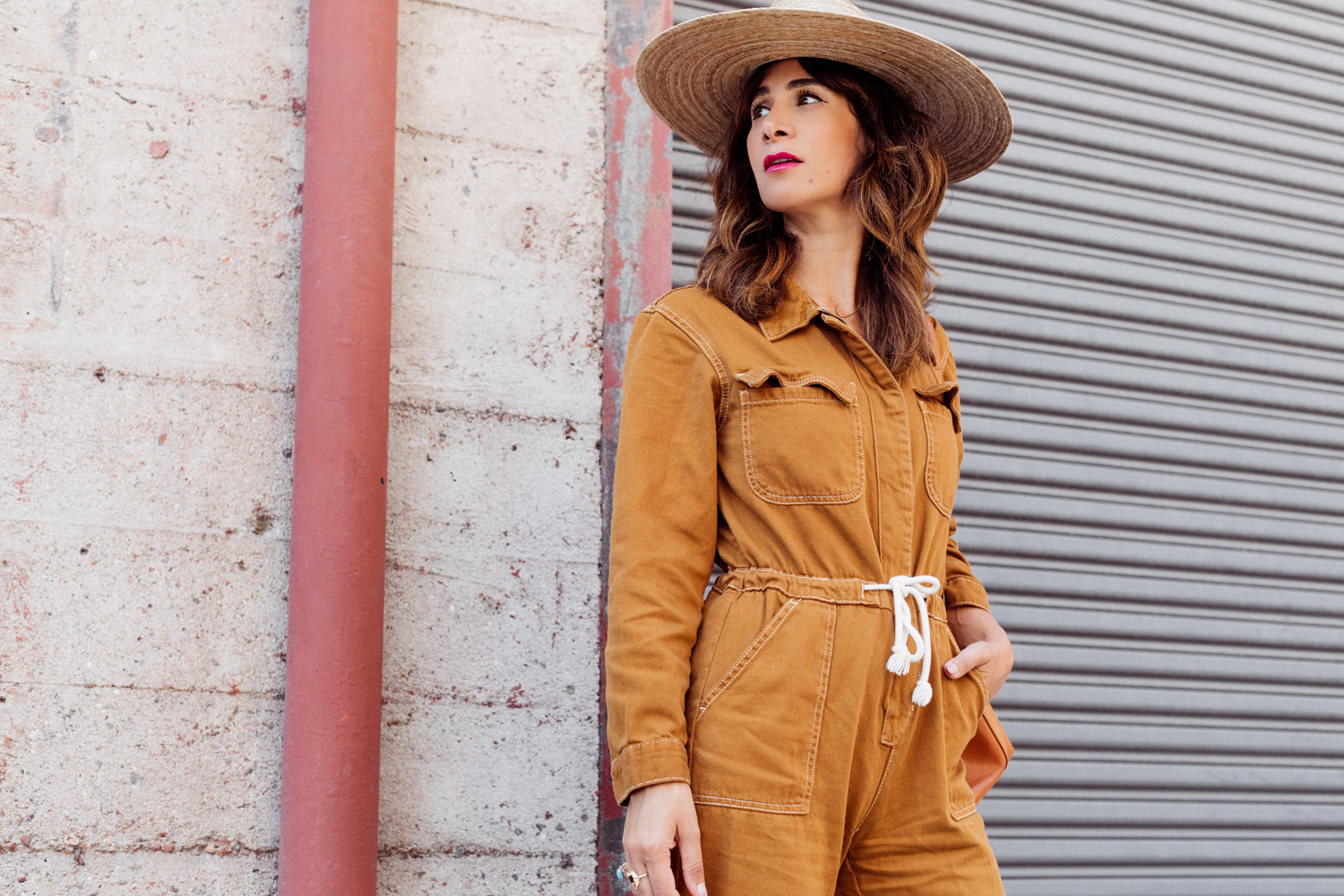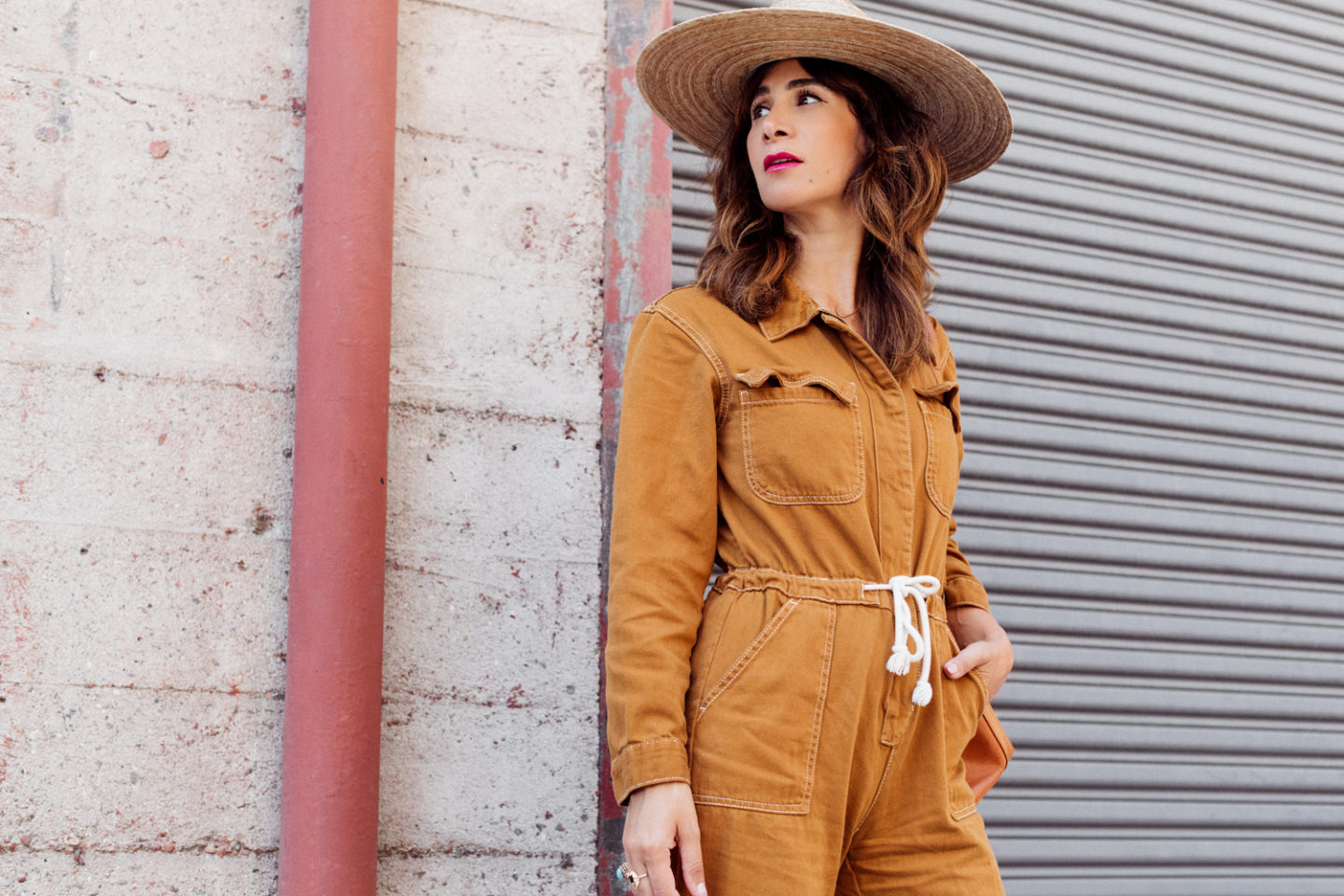
Sustainability has become a highly-discussed topic in recent times, as more and more people are becoming conscious of their spending and consumption habits. As a sustainable fashion advocate, I frequently talk about the importance of eco-friendly and ethical fashion practices. However, with the growing popularity of sustainable fashion, many have reached out to me, seeking clarity on what it really means. The term is often thrown around without context, leading to confusion and misconceptions. In fact, sustainable fashion has been associated with elitist brands like Goop, making it seem unattainable. Contrary to this belief, sustainable fashion can be simple and affordable. Let’s delve into the basics of sustainable fashion, and provide tips on how to make it accessible and attainable for all.
What is Sustainable Fashion
Sustainable fashion is more than a type of fashion, it’s a movement in and of itself. It represents a change in the way fashion is made, bought, and kept cycling through our eco-system in a way that helps the Earth, ecologically and socially. Brands have to create their clothing and products in a way that is considerate to both the environment and humanity as a whole. By creating, buying, keeping and recycling sustainably, we create a system in which we can leave a negative footprint on the Earth.
Sustainable fashion refers to clothing that is designed, manufactured, distributed, and used in ways that are environmentally friendly. Ethical fashion refers to clothing made in ways that value social welfare and worker rights. Both sustainable and ethical fashion are prevalent in the conscious consumerism world and many brands are committed to both sustainability and transparency.
When I consider sustainability in the fashion industry, these are all of the items I consider to be the main points:
- Ethical & transparent manufacturing: This is fashion made by companies that prioritize good health, safety, and fair compensation of their workforce. They are also transparent about their supply chain (where they source and make products) to employee rights.
- Sustainable manufacturing: This is fashion made from sustainably-grown or eco-conscious materials, following processes that minimize negative environmental impacts. This includes the materials or textiles used in productions as well as the process used to create the clothing. The best is to find organic materials that require little to no chemical processing.
- Quality: Simply put, this is fashion that is made to last. The quality and craftsmanship are of top priority so the end product can last for years.
- Circularity: The goal is to produce fashion that can be reused, recycled, resold, repurposed and stay out of landfill for as long as possible. Circularity also means the end life of a product is considered when it is produced.
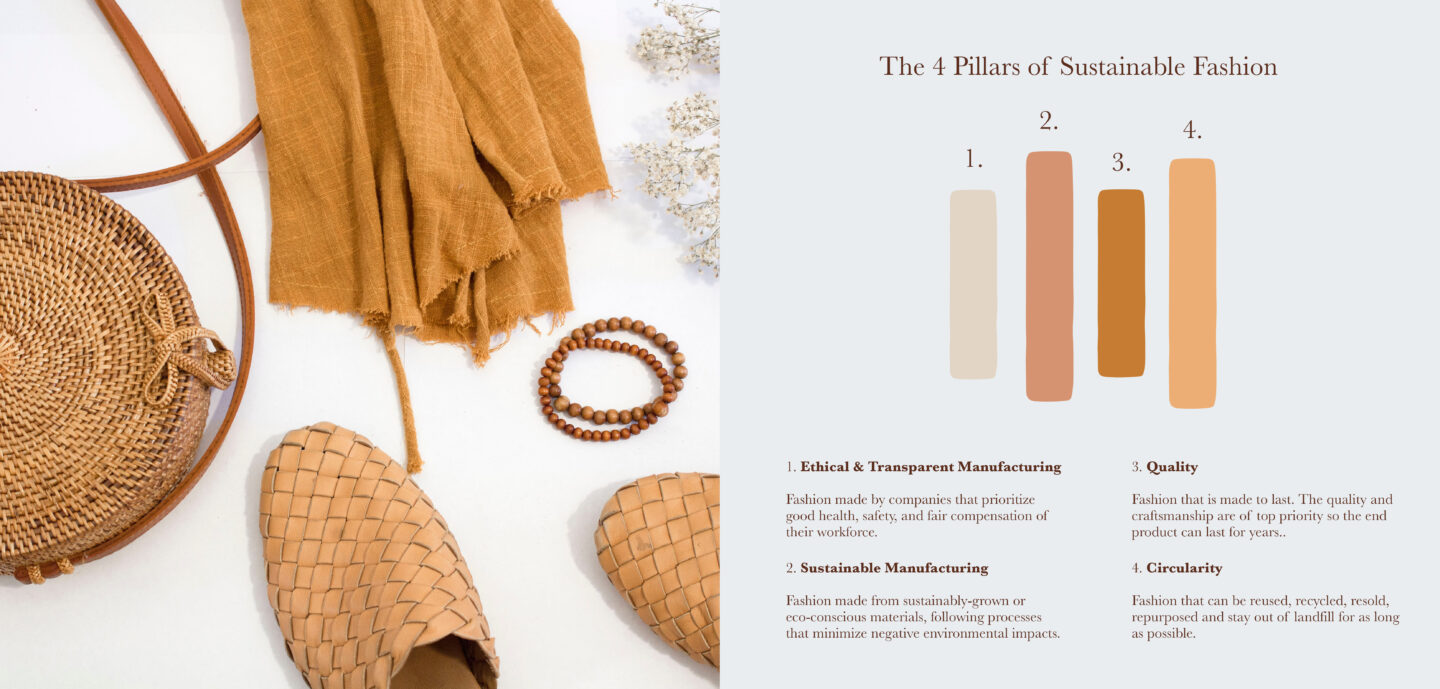
How to be a sustainable and mindful consumer
There are certainly times where it’s convenient to buy fast fashion, when you need something specific and fast. There is also the draw of the price tag: fast fashion is made in larger quantities with less sustainable textiles making the price drop significantly from its sustainable counterparts.
When it comes to your buying practices, it’s best to think about it as an exchange. You are part of the process of sustainable fashion, because as soon as you buy something, what you do with it impacts the rest of the world. If you’d like to buy more sustainably, here are a few things to consider before purchasing new products and clothing:
- What morals and beliefs are you supporting?
- How many wears will you get out of each item, and does it balance out with how it was made?
- When you’re done wearing it, can it be sold or donated and reused? If it can’t be upcycled, can it be recycled? For Days Take Back Bag is a great option for recycling clothing that can’t be reused or sold. For items that can be resold, check out Crossroads Trading!
This may seem like overkill, but it’s been super helpful in my journey of being more conscious and sustainable to realize my involvement in the process. It’s why I’m such a huge advocate for vintage and secondhand shopping – you can get quality clothing with history, continue to help the economy and help heal the Earth all at the same time.
An easy way to support sustainable fashion is being cognizant of the fabrics if you’re unable to do additional research on a certain companies practices. The following materials are considered to be most sustainable so you can simply start by focusing on these fabrics when purchasing: organic cotton, linen, hemp, deadstock fabric, tencel and recycled nylon.
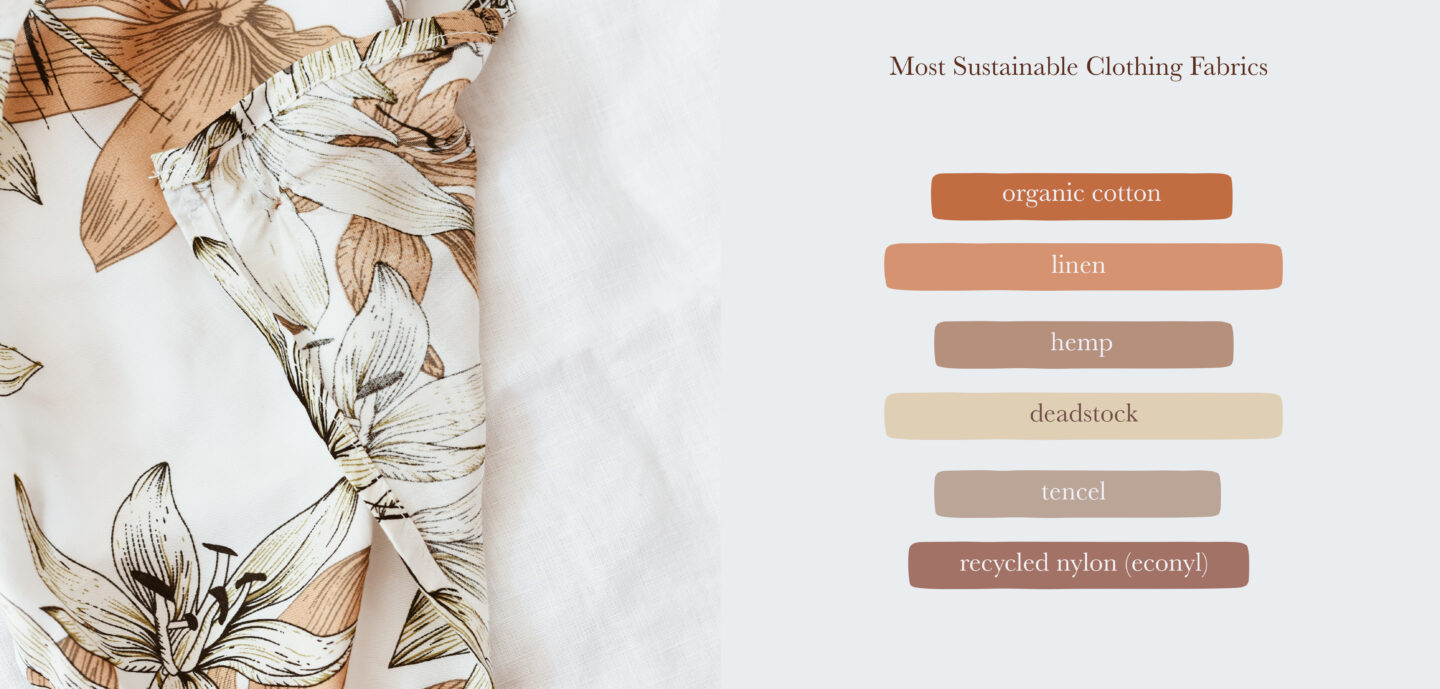
Sustainable Fashion That’s Attainable
One of the problems of sustainable fashion is the misconception that it’s not accessible or attainable – it’s what I like to call the Goop effect. People think in order to be sustainable, you need to spend a lot of money. That’s not the reality and there are various options out there depending on your budget and interest.
- Shop second-hand: thrift stores, flea markets, consignment shops, and online resale platforms like eBay are great options for finding affordable and sustainable fashion pieces. I mean my whole platform is offering you inspiration and styling tips to go this budget conscious and sustainable route!
- Invest in quality pieces: While sustainable fashion pieces may be more expensive upfront, they are often made from high-quality materials that last longer than fast fashion pieces. Investing in quality pieces that you can wear for years to come can save you money in the long run. These are the most sustainable materials to shop.
- Support sustainable brands: Look for sustainable fashion brands that prioritize ethical production practices and use eco-friendly materials. These brands may offer affordable options that align with your values. Most brands will outline what they stand for, how their products are made, and you’ll be able to tell if your item is of the quality you’re looking for to have a positive impact on the Earth (and your closet). This is usually in the brand responsibility or transparency section if you want to get the 411.
- Host a clothing swap: My friends and I used to do this in high school as a free and easy way to refresh our closets and wardrobes for the year.
- Make your own clothing: If you have sewing skills, consider making your own clothing from eco-friendly and sustainable fabrics. This approach can be cost-effective and allows you to create pieces that fit your style and preferences. I’ve been watching my friend Abby make some incredible pieces! She generally sources the materials from the thrift store too!
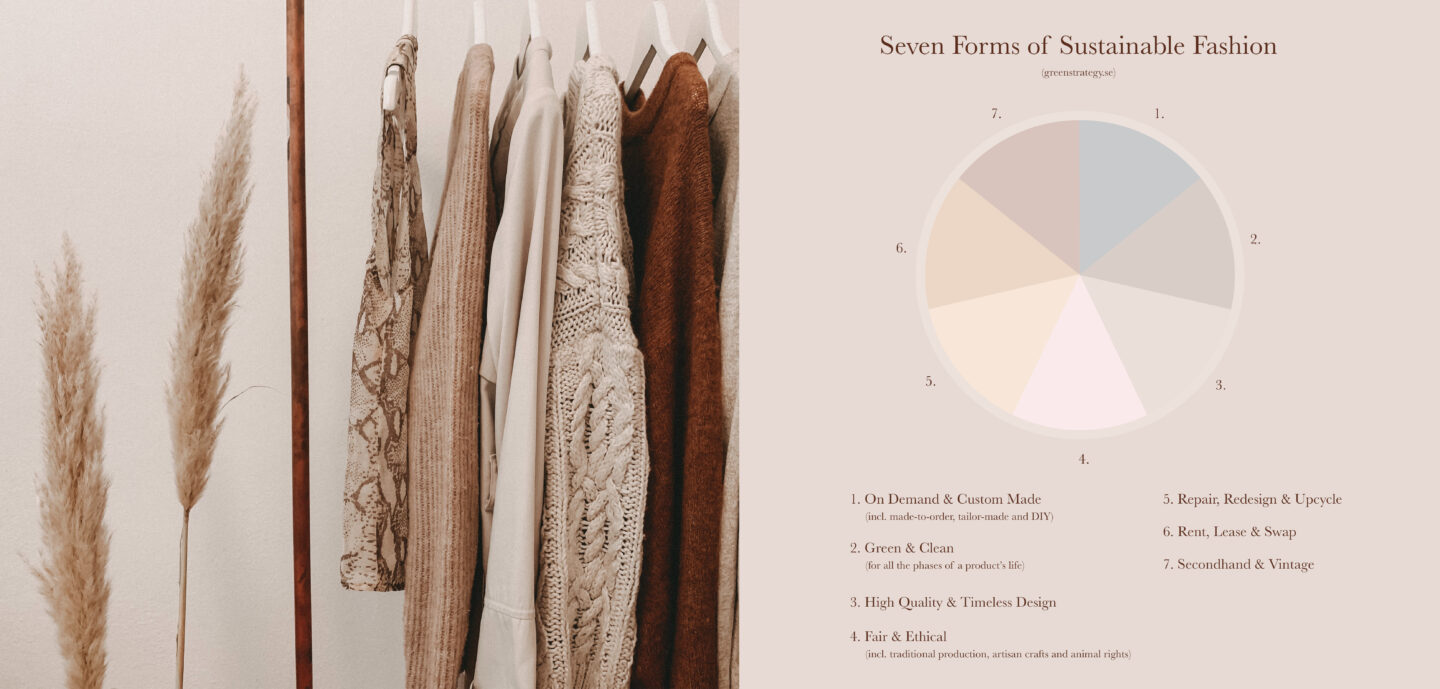
Buying sustainable fashion may be an inconvenience when compared to fast fashion because of lack of extended sizing, price point or just style availability. However, I promise you if you stick with the practice, you’ll find that you end up saving money, time, and resources in the long run. After all, that’s what we’re all here for – more benefits that last longer.
